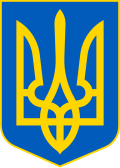| |||||||||||||||||
| Turnout | 84.18% | ||||||||||||||||
|---|---|---|---|---|---|---|---|---|---|---|---|---|---|---|---|---|---|
| |||||||||||||||||
 Results by oblast | |||||||||||||||||
| |||||||||||||||||
 |
|---|
Presidential elections were held in Ukraine on 1 December 1991, [1] the first direct presidential elections in the country's history. Leonid Kravchuk, the Chairman of the Verkhovna Rada and de facto acting president, ran as an independent candidate and was elected for a five-year term with 62% of the vote. [2]
Contents
An independence referendum held on the same day saw 92% of voters voting to secede from the Soviet Union. [2] All six presidential candidates supported independence and had campaigned for a "yes" vote in the referendum.

